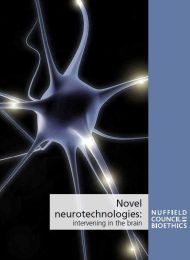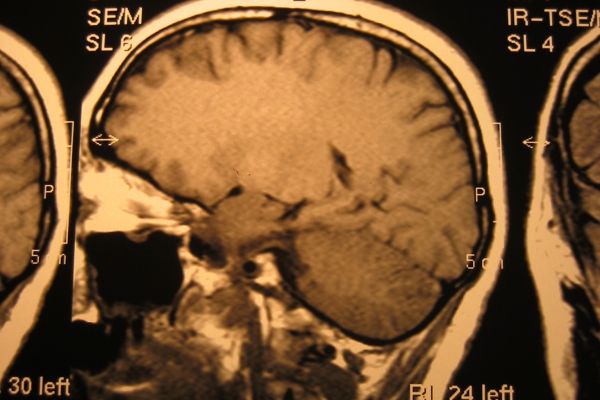Novel neurotechnologies: intervening in the brain
Report
Published 24/06/2013

The development and clinical use of these technologies falls into two distinct areas of regulation:
- The devices used in TBS, DBS and BCIs for medical purposes are regulated as medical devices, and can be marketed once they carry a ‘CE mark’ to indicate compliance with European law.
- Neural stem cell therapies are regulated as advanced therapeutic medicinal products (ATMPs) – more closely resembling the regulation of pharmaceuticals.
There are some marked differences between these two fields of regulation, such as:
- ATMPs intended for the wider market are centrally approved at European level whereas medical devices are regulated at a national level.
- ATMPs have to undergo clinical trials to demonstrate that they are safe and effective.
- Medical devices can be marketed once they meet safety and performance standards, but manufacturers do not have to conduct clinical investigations to demonstrate treatment efficacy before receiving a CE mark.
- Clinical investigations of ATMPs and medical devices are overseen by the national regulator; but in the UK, trials of neural stem cell therapies are also overseen by the Gene Therapy Advisory Committee.
These combined factors mean that the journey of ATMPs from research to market is longer and more complex than for medical devices.
Regulation of medical devices
The requirements for data about the functioning of medical devices before they are placed on the market are relatively light touch, though invasive devices (as used in DBS) must meet higher thresholds of evidence because they pose greater risks to patients’ safety.
One advantage of this system is that devices can get to market relatively quickly, but there is a lack of transparency about the information on which approval decisions are based. The light touch approach to pre-market scrutiny of medical devices makes post-market surveillance for faults and adverse incidents all the more important.
We conclude
Information relating to the approval of medical devices to enter the market, including the evidence used to show that neurodevices meet regulatory requirements, should be publicly accessible.
Approvals based on evidence relating to a similar neurodevice on the market, rather than clinical investigations of the new device, must be justified by the devices being sufficiently similar in effect.
It should be compulsory for medical professionals to report any problems encountered in the use of neurodevices, supported by a scheme identifying newly approved devices. Information regarding adverse incidents and trends should be publicly accessible.
Regulation of ATMPs
Given the health risks posed to patients if a neural stem cell therapy does not work as expected, robust regulation is vital. However, delays and regulatory complexity may present challenges and costs to developers and disincentives to investors.
We conclude
There should be a responsible and proportionate approach to oversight that supports careful and appropriate scientific progress. Recent developments to streamline and reduce delays in the governance of stem cell therapies, and to promote dialogue between regulators and developers, are encouraging.
Regulating therapies for individual patients and rare conditions
There are several exceptional means by which patients can be treated with neurotechnologies that have not been generally approved to be used for their particular condition. These can offer valuable opportunities to address unmet health needs. However, oversight must be sufficiently robust for patients with rare conditions not to be exposed to disproportionate risks.
We conclude
Where neurodevices or ATMPs are approved for use on exceptional or non-routine grounds, it is important that the regulatory authorities have mechanisms for collecting information on when and why these treatments have been used and what the outcomes were and that this information can be shared to improve future good practice.

Share